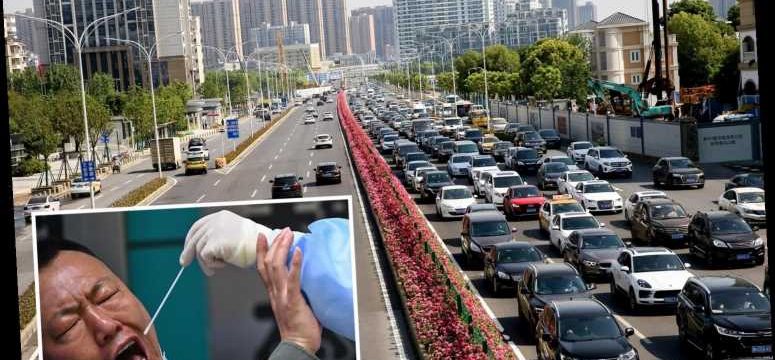WUHAN has discharged its final coronavirus patient – but cautious city officials say they are still testing residents for the killer bug.
Photos show lengthy traffic jams are once again snaking along the main roads of the world’s original coronavirus epicentre.
⚠️ Read our coronavirus live blog for the latest news & updates
Patients in China are discharged after two negative nucleic acid tests, taken at least 24 hours apart, and if they no longer show symptoms.
A health official told reporters on Sunday that Wuhan now has no remaining cases in its hospitals.
National Health Commission spokesman Mi Feng said at a briefing: “The latest news is that by April 26, the number of new coronavirus patients in Wuhan was at zero, thanks to the joint efforts of Wuhan and medical staff from around the country."
The city had reported 46,452 cases, 56 per cent of the national total.
Plus, 3,869 people died from coronavirus – 84 per cent of China’s total.
China recently revised Wuhan’s death toll up by 1,290 to 3,869 after the bungling of hospital reporting on the new bug.
Wuhan and the province of Hubei were put in lockdown near the end of January, with roads sealed, trains and planes cancelled and residents unable to move freely for more than two months.
They were finally granted their freedom from stay-at-home orders on April 7, with scores of people rushing to flee the city by road, air and train.
As a result, there has been an increasing number of vehicles clogging Wuhan's roads, with TomTom's data showing a near-return to peak traffic levels, when compared to the same time last year.
A report in a newspaper owned by the Wuhan government and posted on the city’s website hailed the final patient's discharge as "a historic day".
Hubei has no more suspected cases in its hospitals, said the Associated Press.
However, 1,728 people who had close contact with an infected person remain under medical observation, the province’s health commission reported Monday.
Patients still remain hospitalised elsewhere in China, including 67 in Shanghai and three in Beijing.
Many cities have seen an influx of cases from overseas, prompting the government to curtail international flights and entry sharply.
With the easing of the coronavirus crisis, a central government team that had overseen the response in Hubei since late January left on Monday, China’s official Xinhua News Agency said.
China sealed off Wuhan, a central city of 11 million people, on January 23, in a drastic step to stop the spread of the bug.
But, cases quickly grew across the globe, with Worldometers reporting today that there have been more than 207,000 fatalities, and over three million people have contracted the virus.
On April 22 doctors in Wuhan warned of a growing number of cases where people recovered from the bug but continued to test positive without showing symptoms.
The medics said it was one of their biggest challenges.
The prospect of people remaining positive for the virus, and therefore potentially infectious, is of international concern.,
Many countries – including France, Italy and Spain – seek to ease lockdown measures and resume economic activity as the spread of the virus slows.
Yuan Yufeng, a vice president at Zhongnan Hospital in Wuhan, told Reuters he was aware of a case in which the patient had positive retests after first being diagnosed with the virus about 70 days earlier.
“We did not see anything like this during SARS,” he said, referring to the 2003 Severe Acute Respiratory Syndrome outbreak that infected 8,098 people globally, mostly in China.
'Economic coercion'
Although Wuhan is celebrating the last of its Covid-19 patients being discharged, pressure continues to mount on the way China is – and has previously – dealt with the virus.
Australian Foreign Minister Marise Payne has cautioned China against attempts at "economic coercion" as Australia pushes for an investigation into the coronavirus pandemic.
Australia last week called for all members of the World Health Organization (WHO) to support an independent review into the origins and spread of the coronavirus, and is lobbying world leaders.
However, China's foreign ministry has attacked the probe.
"Maybe the ordinary people will say 'Why should we drink Australian wine? Eat Australian beef?" Cheng said in the interview published on the front page of The Australian Financial Review.
Cheng said it was possible that tourists may have "second thoughts" about visiting Australia.
"The parents of the students would also think… whether this is the best place to send their kids," he threatened.
America's Secretary of State Mike Pompeo has also urged the regime to “come clean” over the origins of the disease, after officials dismissed a claim that linked the pandemic to a Wuhan lab.
Questions have been asked about the source of the virus as scientists have yet to determine a concrete answer.
The working theory is that the virus came from bats, before jumping to another animal at a so-called wet market in Wuhan, and then mutating before being passed to humans.
Source: Read Full Article












